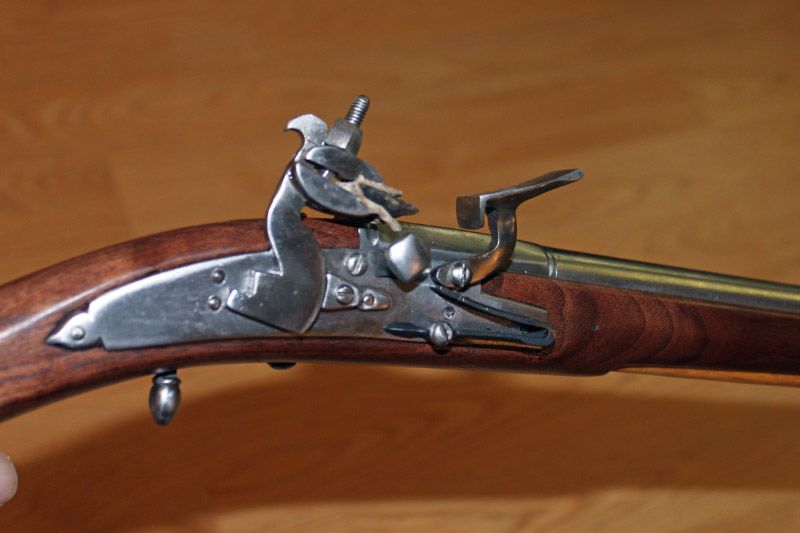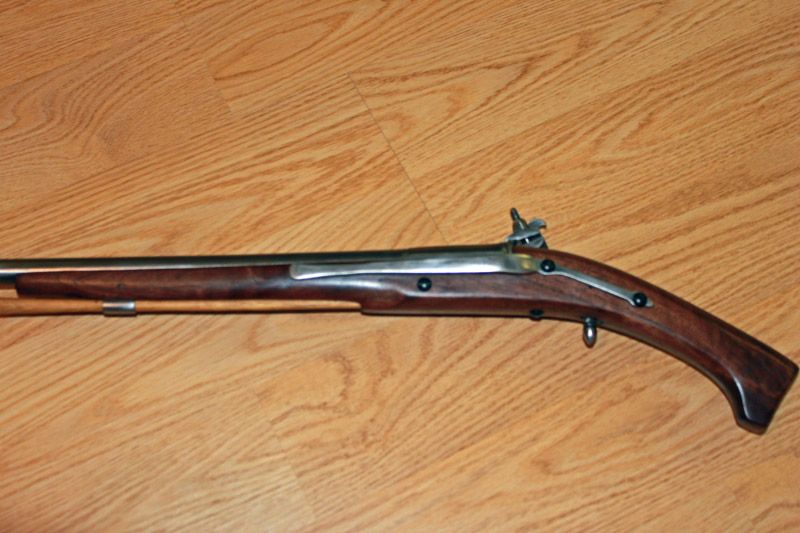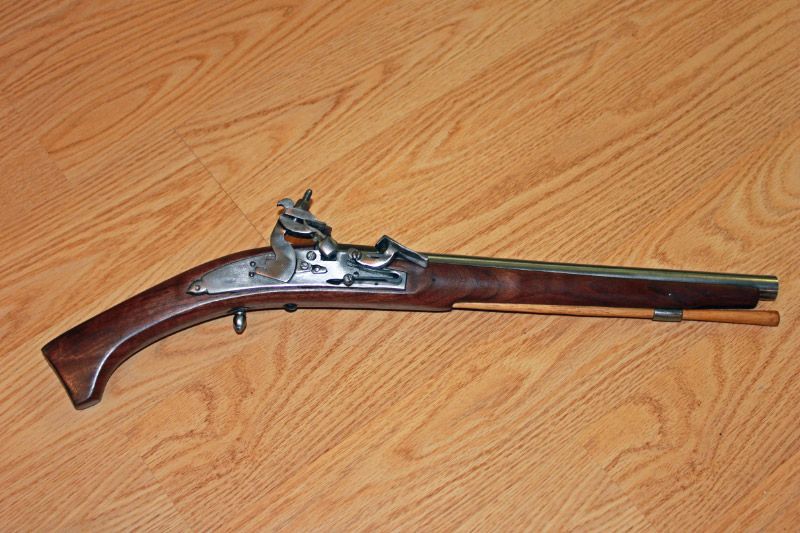MacRob46
45 Cal.
- Joined
- Jun 2, 2007
- Messages
- 643
- Reaction score
- 35
In 2006 the folks at Jamestown, Virginia found a pistol at the bottom of an old well. The well still had water in it and the lack of oxygen in the water actually preserved the wood stock of the gun. Based on the ball trigger, brass barrel and style of snaphaunce lock, they decided that it was Scottish, although I have my doubts. The pistol is still be conserved and I do not think it is on display yet. Anyone who knows differently, please correct me. John Buck of Callands, Virginia has been making replicas of the pistol based on information he has gotten from the folks at Jamestown. I bought one almost two years ago.
I have attached some photos of my gun. There are not many photos of the original but it appears from what I have seen that John probably deviated a bit from the stock architecture of the original. But, it is an interesting piece and I thought I would share some photos. Feel free to ask questions about it.
Sorry...something happened to the pictures. Will have to try again later.
I have attached some photos of my gun. There are not many photos of the original but it appears from what I have seen that John probably deviated a bit from the stock architecture of the original. But, it is an interesting piece and I thought I would share some photos. Feel free to ask questions about it.
Sorry...something happened to the pictures. Will have to try again later.











